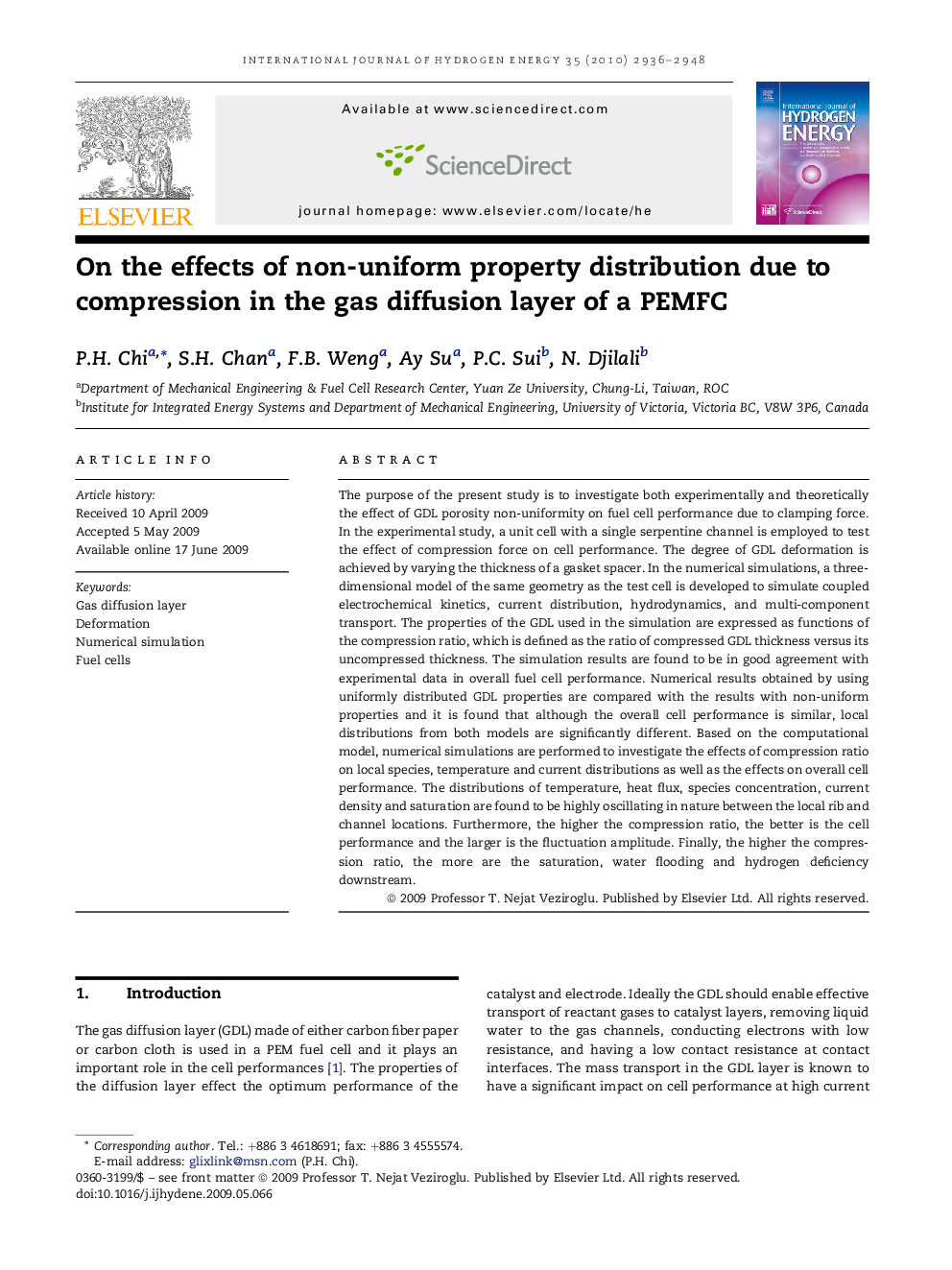| Article ID | Journal | Published Year | Pages | File Type |
|---|---|---|---|---|
| 1273285 | International Journal of Hydrogen Energy | 2010 | 13 Pages |
The purpose of the present study is to investigate both experimentally and theoretically the effect of GDL porosity non-uniformity on fuel cell performance due to clamping force. In the experimental study, a unit cell with a single serpentine channel is employed to test the effect of compression force on cell performance. The degree of GDL deformation is achieved by varying the thickness of a gasket spacer. In the numerical simulations, a three-dimensional model of the same geometry as the test cell is developed to simulate coupled electrochemical kinetics, current distribution, hydrodynamics, and multi-component transport. The properties of the GDL used in the simulation are expressed as functions of the compression ratio, which is defined as the ratio of compressed GDL thickness versus its uncompressed thickness. The simulation results are found to be in good agreement with experimental data in overall fuel cell performance. Numerical results obtained by using uniformly distributed GDL properties are compared with the results with non-uniform properties and it is found that although the overall cell performance is similar, local distributions from both models are significantly different. Based on the computational model, numerical simulations are performed to investigate the effects of compression ratio on local species, temperature and current distributions as well as the effects on overall cell performance. The distributions of temperature, heat flux, species concentration, current density and saturation are found to be highly oscillating in nature between the local rib and channel locations. Furthermore, the higher the compression ratio, the better is the cell performance and the larger is the fluctuation amplitude. Finally, the higher the compression ratio, the more are the saturation, water flooding and hydrogen deficiency downstream.
